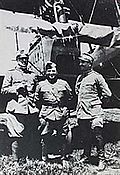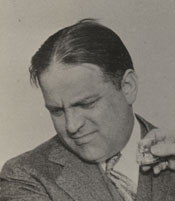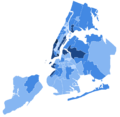Fiorello La Guardia facts for kids
Quick facts for kids
Fiorello La Guardia
|
|
|---|---|
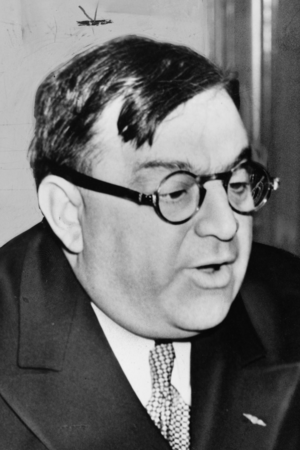
La Guardia, c. 1940
|
|
| 2nd Director General of the United Nations Relief and Rehabilitation Administration | |
| In office April 1, 1946 – December 31, 1946 |
|
| Preceded by | Herbert H. Lehman |
| Succeeded by | Office abolished |
| 99th Mayor of New York City | |
| In office January 1, 1934 – December 31, 1945 |
|
| Preceded by | John P. O'Brien |
| Succeeded by | William O'Dwyer |
| 5th President of the United States Conference of Mayors | |
| In office 1935–1945 |
|
| Preceded by | Daniel Hoan |
| Succeeded by | Edward Joseph Kelly |
| Member of the U.S. House of Representatives from New York |
|
| In office March 4, 1923 – March 3, 1933 |
|
| Preceded by | Isaac Siegel |
| Succeeded by | James J. Lanzetta |
| Constituency | 20th district |
| In office March 4, 1917 – December 31, 1919 |
|
| Preceded by | Michael F. Farley |
| Succeeded by | Nathan D. Perlman |
| Constituency | 14th district |
| 10th President of the New York City Board of Aldermen |
|
| In office January 1, 1920 – December 31, 1921 |
|
| Preceded by | Robert L. Moran |
| Succeeded by | Murray Hulbert |
| Personal details | |
| Born |
Fiorello Enrico Raeffaelo La Guardia
December 11, 1882 New York City, New York, U.S. |
| Died | September 20, 1947 (aged 64) New York City, New York, U.S. |
| Resting place | Woodlawn Cemetery |
| Political party | Republican |
| Other political affiliations |
Roosevelt Progressive (1916) American (1916) Democratic (1918) LaFollette Progressive (1924) Socialist Party of America (1924) Progressive Labor (1926) City Fusion (1933–41) American Labor (1937–41) Ind. Progressive (1937) United City (1941) |
| Spouses |
Thea Almerigotti
(m. 1919; died 1921)Marie Fisher
(m. 1929) |
| Children | 3 |
| Education | Timothy Dwight School |
| Alma mater |
|
| Profession | Politician |
| Signature | |
| Military service | |
| Allegiance | United States |
| Branch/service | United States Army Air Service |
| Years of service | 1917–1919 |
| Rank | |
| Battles/wars | World War I |
Fiorello La Guardia (December 11, 1882 – September 20, 1947) was an important American lawyer and politician. He served in the United States House of Representatives for New York. Later, he became the 99th Mayor of New York City, serving from 1934 to 1945.
La Guardia was known for his energetic and strong personality. He was often called "the Little Flower" because his first name, Fiorello, means "little flower" in Italian. Many people consider him one of the greatest mayors in American history. Even though he was a Republican, other parties often supported him. This included the Democratic Party in New York.
Born to Italian immigrants in New York City, La Guardia worked to improve the city. As mayor, during the Great Depression and World War II, he made big changes. He united the city's public transport, built lots of public housing, playgrounds, parks, and airports. He also reorganized the New York Police Department. He brought federal programs like the New Deal to the city. He also worked to stop corruption and make city jobs based on skill, not connections.
La Guardia was also a major national figure. He supported the New Deal and had a good relationship with President Franklin D. Roosevelt. This helped bring money to New York City. His radio show, "Talk to the People," made him famous beyond New York.
Contents
Early Life and Education
Fiorello Raffaele Enrico La Guardia was born in Greenwich Village, New York City, on December 11, 1882. His father, Achille, was from Italy and was a musician in the United States Army. His mother, Irene, was from Austria. Fiorello's family moved often because of his father's army work. They lived in places like the Dakota Territory and Arizona Territory.
Fiorello tried to join the military during the Spanish–American War but was not accepted. Instead, he became a war correspondent for a newspaper. His father became ill and the family moved to Trieste, Italy, where his father later passed away.
Career and Public Service
Fiorello La Guardia started his career working at American consulates in Europe. He worked in Budapest and Fiume (now Rijeka) from 1901 to 1906. After returning to America, he worked as an interpreter at Ellis Island from 1907 to 1910. He could speak Croatian, Italian, and German.
He also worked various other jobs, like a translator for a children's protection group. In 1912, he supported a large strike by garment workers, giving speeches in Italian and Yiddish. La Guardia studied law and became a lawyer in 1910. He also served as a deputy attorney general for New York from 1915 to 1917.
Early Political Journey
Local Politics in New York
La Guardia joined the Republican club while studying law. He first ran for President of the New York City Board of Aldermen in 1919. He won this election and resigned from the U.S. House of Representatives at the end of 1919.
Serving in the U.S. House of Representatives
La Guardia ran for the U.S. House of Representatives in 1914 but lost. He ran again in 1916 and won by a small number of votes. He was supported by different ethnic groups in his district. In 1918, he won re-election.
In 1922, La Guardia won a seat in Congress from East Harlem. He served there until 1933. During World War I, he joined the military and became a captain. He trained Italian pilots and was promoted to major. He even received the Flying Cross from the King of Italy.
In Congress, La Guardia became known as a strong reformer. He supported laws to help workers and spoke out against strict immigration rules. He also fought for the rights of poor farmers and minorities. One of his most important laws was the Norris–La Guardia Act in 1932. This act helped protect labor unions and stopped courts from enforcing contracts that prevented workers from joining unions.
Becoming Mayor of New York
The 1933 Mayoral Election
In 1933, New York City's mayor, Jimmy Walker, was forced to leave office due to scandal. La Guardia decided to run for mayor. He ran on the Fusion Party platform, which was supported by Republicans, some Democrats, and independent voters.
La Guardia promised a more honest government and wanted to make the city run better. He won the election with support from many different groups. These included German Americans, Jewish people, and Italian Americans. He became the city's first Italian-American mayor.
Mayor's Goals and Achievements
When La Guardia became mayor in January 1934, he had five main goals:
- Fix the city's finances.
- Expand federal programs to help unemployed people find work.
- Stop corruption in government and crime in businesses.
- Make sure city jobs were given based on skill, not political favors.
- Modernize the city's buildings and transportation.
He worked closely with President Roosevelt and federal agencies. This brought over $1 billion to New York City for public works projects. He and Robert Moses, his Parks Commissioner, built many important structures. These included highways, bridges, tunnels, and two airports. LaGuardia Airport was named after him.
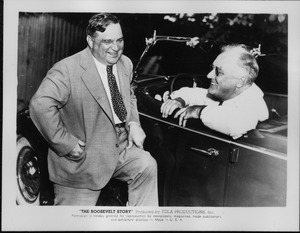
Addressing Social Issues
In 1935, a riot happened in Harlem. La Guardia walked through the streets to help calm the situation. He then created a commission to find out why the riot happened. The report found that discrimination in jobs, police actions, and racial segregation were causes.
La Guardia was the city's first Italian-American mayor. He was also part Jewish and part Catholic. He spoke several languages, including Italian, German, Yiddish, and Croatian. This helped him connect with many different groups of people in New York.
He strongly opposed Nazism. He supported boycotts of German goods and spoke out against Hitler. He also appointed judges from diverse backgrounds, including the first African-American woman judge in New York, Jane Bolin.
Major Public Works
La Guardia is praised for helping New York City's economy during the Great Depression. He oversaw many large public works projects. These projects created thousands of jobs for people.
Some of the major projects built during his time as mayor include:
- The West Side Highway
- The East River Drive
- The Brooklyn Battery Tunnel
- The Triborough Bridge
- LaGuardia Airport and Idlewild Airport (now JFK)
In 1943, La Guardia saved the Mecca Temple building. He helped turn it into the New York City Center of Music and Dance.
Busy Year of 1939
The year 1939 was very busy for La Guardia. He opened the 1939 New York World's Fair in Queens. He also opened New York Municipal Airport No. 2, which was later renamed LaGuardia Airport. That year, the city also took over the New York City Subway system, making it public.
City Reforms
La Guardia worked to reform the city government. He helped create the powerful New York City Board of Estimate. This board helped manage the city's finances.
He also supported the Ives-Quinn Act in 1945. This law banned job discrimination based on race, religion, color, or national origin. New York was the first state to create an agency to handle such complaints.
World War II Efforts
In 1941, before the U.S. entered World War II, President Roosevelt appointed La Guardia as the first director of the Office of Civilian Defense (OCD). This agency prepared for things like blackouts and air raids. La Guardia also helped create the Civil Air Patrol. He tried to do both jobs, mayor and OCD director, but it was too much.
The war helped end the Great Depression in New York City. Unemployment went down, and the city became a key point for sending supplies and soldiers to Europe.
By 1944, La Guardia's popularity began to decline. He decided not to run for a fourth term as mayor in 1945. In July 1945, when city newspapers were on strike, La Guardia famously read the comics on the radio to entertain New Yorkers.
Political Beliefs
La Guardia was a progressive politician. He believed in:
- Easier immigration rules.
- Removing U.S. troops from Nicaragua.
- Protecting the rights of striking workers, poor farmers, and minorities.
- Fairer income taxes.
- More government oversight of big businesses.
- National unemployment insurance.
He was never an isolationist. He believed the U.S. should use its influence around the world to support democracy and independence. He supported the League of Nations and peace conferences.
Personal Life
La Guardia was a Freemason. He married Thea Almerigotti in 1919. They had a daughter, Fioretta, who sadly died young. Thea also passed away in 1921. Her death was a great tragedy for La Guardia.
He later married Marie Fisher in 1929. She had been his secretary. They adopted two children, Eric Henry and Jean Marie. Jean Marie was La Guardia's niece from his first marriage.
Family During World War II
La Guardia's sister, Gemma La Guardia Gluck, and her husband were living in Hungary during World War II. They were arrested by the Nazis in 1944. The Nazis knew Gemma was La Guardia's sister and held her as a political prisoner. She was sent to a concentration camp.
Gemma survived the camp and was released in 1945. Her husband died in the camp. It took two years for Gemma to get permission to come to the United States. She was reunited with her brother in New York just four months before he passed away.
Death and Legacy
Fiorello La Guardia was a short man, about 5 feet 2 inches tall. He died of pancreatic cancer on September 20, 1947, at the age of 64. He is buried at Woodlawn Cemetery in the Bronx.
Lasting Impact
Historians often rank La Guardia as one of the best American big-city mayors. He worked closely with President Roosevelt's New Deal programs. This helped bring federal money to New York City. He also helped new groups, like Jews and Italians, gain political recognition.
His administration, with Robert Moses, built much of New York City's modern infrastructure. His big goals set new standards for what a city could achieve.
Places Named After Him
Many places in New York are named after Fiorello La Guardia:
- LaGuardia Airport
- LaGuardia Community College
- LaGuardia Place
- The Fiorello H. La Guardia High School of Music & Art and Performing Arts
In 1972, the United States Postal Service honored him with a postage stamp. Streets in Tel Aviv, Israel, and Rijeka, Croatia, are also named after him.
Images for kids
See also
 In Spanish: Fiorello La Guardia para niños
In Spanish: Fiorello La Guardia para niños
- Statue of Fiorello H. La Guardia, Manhattan
- La Guardia and Wagner Archives
- List of mayors of New York City
- New York City mayoral elections for votes in 1929, 1933, 1937 and 1941.
- Timeline of New York City, 1930s–1940s
- Mayor LaGuardia "Talk to the people" series on WNYC
- Fiorello LaGuardia (The Compassion of New York’s Famous Mayor)


